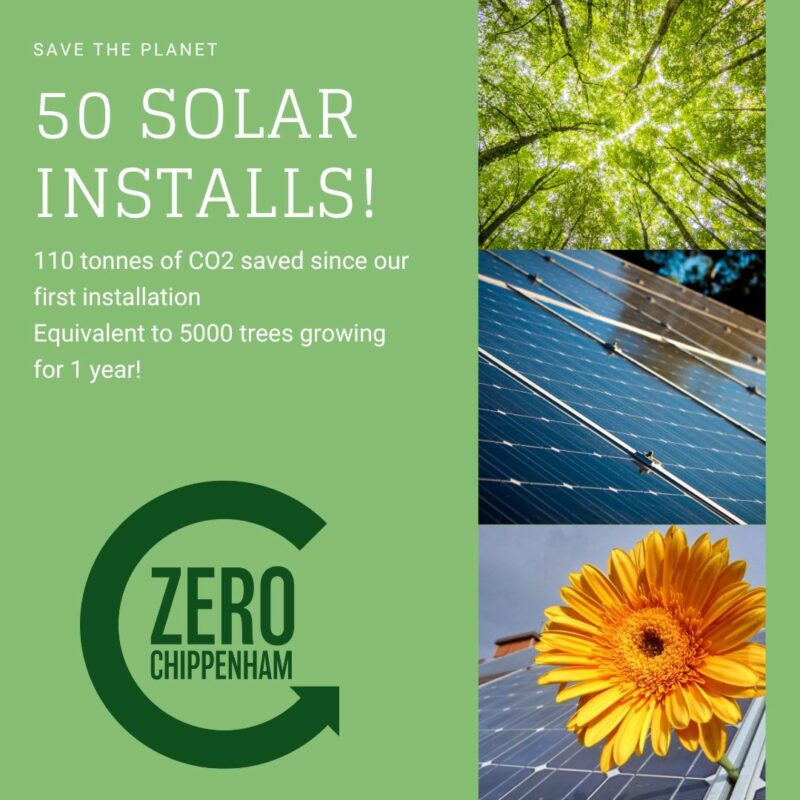We’re delighted to have passed the milestone of 50 completed Solar installations from our Community Solar PV buying scheme!
The scheme was launched by Zero Chippenham in 2019 with two key aims…
- To reduce the cost of solar installations using the group buying power of a community
- To independently vet and check installers to identify those that used gold standard industry practice including MCS certification, NAPIT and NICEIC certification.
Since launch we have used a total of three local installers and established good working relationships with all three. The scheme has expanded to work with our friends and partners in Sustainable Calne and RWB Environmental.
At the time of writing our 50 installations have generated solar for 28,813 days, saving 113 tonnes of CO2! (1)
That’s equivalent to 5000 trees growing for 1 Year! (2)
Zero Chippenham are a not for profit community group, run entirely by volunteers with no paid staff. We draw on a wide range of expertise in our volunteers and are always pleased to help with impartial information and advice.
If you would like to enquire about solar panels in the Chippenham and surrounding areas please visit our Community Solar page and fill out the enquiry form, we’d be delighted to help.
(1) Using the Energy saving trust figure of 1.42 tonnes of CO2 per year for a typical 4kWp installation. This could be higher in Wiltshire due to our geographic location, and, our grid mix is frequently very high carbon intensity
(2) This is an approximation. This can vary a lot per location, type of tree(s), weather conditions, etc. Most calculations show carbon capture per hectare. One hectare can vary from 500 to 1500 trees. In other calculations 15 to 83 trees are needed to capture 1 tonne CO2 in average per year, from seedling till an adult adult tree. In the tropics there will be fewer trees needed to store 1 ton of CO2 than in the northern hemisphere, because trees grow faster around the equator. We have chosen for 50 trees per year needed in order to capture 1 tonne of CO2


